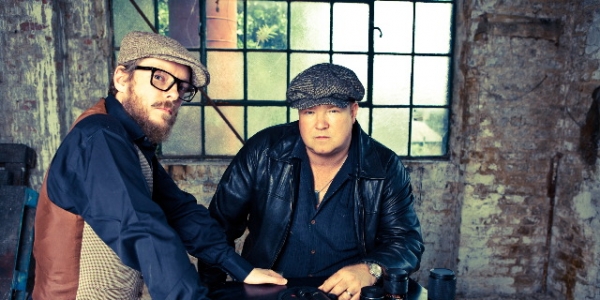“The event is an entity itself,” admitted Creative Director Andrew Walsh. The event programmer, who has over 20 years experience in the industry, has been to Nuit Blanches in the past, including Toronto and Paris. “Just wandering the streets and looking at the projections on the laneways, and looking at the sort of works that are displayed in the streets themselves, is a thing within itself. I mean, you could just come into the city and wander around Pictures and Posers and [go] down to Loved and Treasured, then to the Light Fantastic, and on towards Wonderland, and not go into a single institution and you’d still have a really big and interesting night.”
Hosted from sunset to dawn, White Night Melbourne will see our eclectic city transformed into eight themed precincts — Wonderland, Theatre of Dreams, World Above, Light Fantastic, Loved and Treasured, Pictures and Posers, Outer Limits, and Elizabeth What Were You Thinking? Each precinct is named after the works they display or the area they are located in.
“I wanted to give all the precincts a personality,” explained Walsh, elaborating that the Light Fantastic was named after the event From The Deep, dispelling any references to a certain Terry Prachett novel. From The Deep will feature an all-night light display along the Yarra River, including lasers and curving water.
White Night Melbourne required meticulous management, and with only six months to program the festival, Walsh has competed a feat. Most organisers are given a year to complete a festival of this scale, but Walsh’s past experiences helped him meet the reduced time limit. Walsh’s experience in event direction has seen him organise the London Millennium Celebrations, and work as an executive producer for the Athens Olympic Opening and Closing Ceremonies, among many other things. The Creative Director is also a visual artist and theatrical director, which only made the job easier for him.
“Most things I do are stadium based. [White Night Melbourne] is similar in that most things I do open and close on the same night. It’s different in that it’s over a much bigger geographical area and involves a lot more autonomous artists, [but] it’s been an interesting challenge,” mused Walsh, then added definitely, “It’s been good.”
The team, who have been selected to the run the next two years of White Night Melbourne, engaged in three selection processes for the program. It included commissioning their own projects, approaching Arts institutions for submissions, while posting an expression of interest to the broader Arts community. RMIT University responded to this with Animated Laneway, a moving storyboard that will be projected onto an alleyway behind RMIT’s Bookshop. Melbourne Museum programmed their own event, A Night At The Museum, an event where people can wander through the dinosaur exhibition in the dark.
“In subsequent years I’d imagine there would be more of the process where people submit works, but there is only so much you can do in a short period of time,” said the director, expressing his submission hopes for future White Nights. “It’ll always be a mixture of the two: an application process like Fringe [Melbourne Fringe Festival], but there will also be curated [or commissioned] works. I think it’s [White Night] important, ‘cause it’s open to a very wide and diverse audience of submissions. It’s important that the voices of Melbourne artists and their works are heard. I think the intensity of [the festival helps] too; [as] the event grows, it gives a greater platform for those artists to present their work.”
Walsh is hoping that this platform will grow and mimic ones similar to that in Toronto and Paris. The two cities, which have hosted Nuit Blanche for 17 years between them, have a large turn out each year. Toronto sees American citizens travel up, and over, the border to visit Toronto to experience Nuit Blanche. In fact, the event director enjoyed his experience at Night Blanche Toronto so much that it became a basis for the Australian model.
“Toronto is more like Melbourne in terms of its layout; it’s a grid system. It’s a fairly modern city,” explained Walsh, outlining the similarities between the two cities. “It’s has Nuit Blanche for about seven years, so again, it has quite a big following now, both locally and regionally, and from North America. It gets enormous numbers. At midnight, looking down the main streets of Toronto, which [are] ordinarily empty because it’s a very traditional business district, I reckon, just in the main street, there was a quarter of a million people. We won’t see those numbers in one-go in for Melbourne, nor do we want them at this stage.”
Despite this inhibition, Walsh is hoping, that as the festival finds its footing in future years that White Night Melbourne can become a yearly event that Victorians, and hopefully all Australians look forward to each year.
“They’re amazing,” enthused the White Night Director, “being able to wander around the city in the middle of the night and going to art institutions and galleries, and experiencing artwork and music on the streets is just fantastic.”
BY AVRILLE BYLOK-COLLARD







